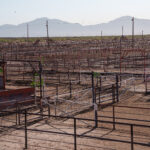The Texas Windstorm Insurance Association recently filed for 5 percent increases in both its residential and commercial rates, effective Jan. 1, 2011. While indications are those hikes won’t bring the rates for the state’s coastal insurer of last resort up to the level they need to be, they likely will have to be enough for now.
TWIA provides wind and hail coverage in the 14 coastal counties and parts of Harris County. It is required to make an annual rate filing with the Texas Department of Insurance no later than August 15 of each year. Actuarial data indicates that rate increases of 27 percent for residential and 36 percent for commercial are needed.
TWIA Executive Director Jim Oliver has said he’s not so sure there is an “actuarially sound” rate for the types and extent of risks the association insures. For example, “there is no rate to pay for a year like 2008 where we had $2.3 billion in losses,” Oliver said. “You have to be able to pay for funding over a period of time in the form of bond and/or reinsurance.”
Because of legislative requirements, TWIA operates with restraints that private insurers do not have. “No company would insure the concentration of risk we have in, say, Corpus Christi or Galveston,” Oliver said. “There really isn’t a rate for the kind of storm that could come in and literally give you a 100 percent or 90 percent or 80 percent of damage for each risk that you have there.”
The vote by TWIA’s board of directors to file for the 5 percent increase is in line with Oliver’s position that rates will have to rise over time rather than all at once. Rate increases greater than 5 percent must be approved by the commissioner within 60 days.
Oliver explained that there is no legislative restriction as far as rate increases go, but there are political barriers. Insurance Commissioner Mike Geeslin, who has the ability to disapprove rate requests, has made it clear he’s not interested in hefty rate increases for TWIA at any one time. Unlike in Louisiana, where rates for Citizens Property Insurance Corp. by law must be 10 percent higher than those of a private insurer competing in the same region, there is no requirement that TWIA’s rates exceed those in the private market.
“It’s very clear that we should have rates that are actuarially based and that they are not unfair, discriminatory, etc.,” Oliver said, adding that TWIA can request and use appropriate actuarial models. However, Oliver said, the association is looking at raising “rates over time to a level that would as best as possible allow the private market to come in and cherry pick so they could compete rate-wise and write some of the risks on an individual company basis.”
He added that TWIA’s own actuarial analysis indicates rates should rise “somewhere between 25 and 50 percent more than the rate that we have now. That would allow for enough profit to come in each year, build the reserve trust fund in good years; enough profit and enough balance to purchase reinsurance and to fund bonds and that sort of thing.”
Jerry Hagins, spokesman for the TDI, said it is premature to say whether the insurance commissioner will disapprove the rate request. The commissioner’s approval is not needed for rate filings of 5 percent or less; he has 30 days from the rate filing to disapprove of it. If the commissioner does not disapprove of the rate increase, it will automatically take effect, Hagins explained.
IJ Editor Patricia-Anne Tom contributed to this story.
Topics Catastrophe Natural Disasters Texas Windstorm Pricing Trends
Was this article valuable?
Here are more articles you may enjoy.


 More US Beef Plants May Close as Cattle Herds Keep Tightening
More US Beef Plants May Close as Cattle Herds Keep Tightening  UPS Ripped Off Seasonal Workers With Unfair Pay Practices, Lawsuit Alleges
UPS Ripped Off Seasonal Workers With Unfair Pay Practices, Lawsuit Alleges  Waymos Froze, Blocked Traffic During San Francisco Power Outage
Waymos Froze, Blocked Traffic During San Francisco Power Outage  Viewpoint: Artificial Intelligence Is Rewriting the Rules for Commercial Lines
Viewpoint: Artificial Intelligence Is Rewriting the Rules for Commercial Lines 


